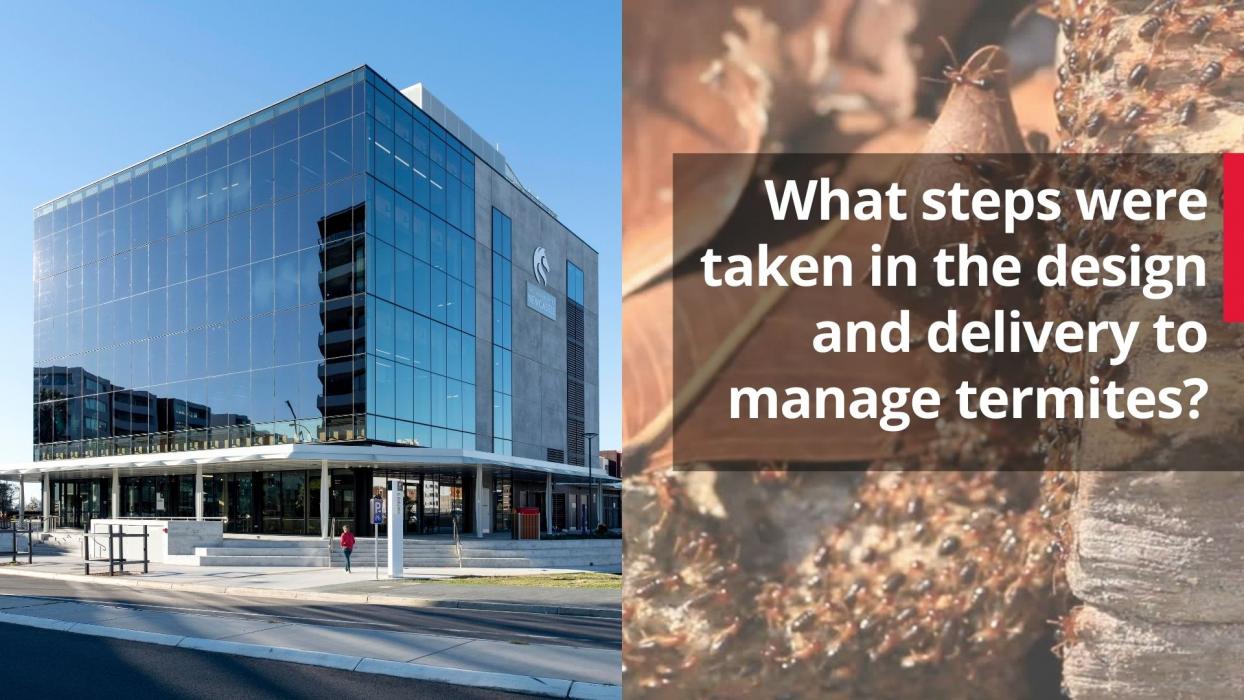Mass Timber Construction Myth Busters



Enter “mass timber construction” into your web browser and you’ll discover droves of articles showing mass timber being used in envelope-pushing, construction projects across the globe. This increasing popularity is music to our ears! Northrop’s own involvement in these innovative buildings started as early as 2016 and our capability, portfolio and passion around designing engineered timber buildings has continued to grow.
Our enthusiasm is shared across the industry, and we were delighted to welcome over 200 people to our recent webinar, Mass Timber Structures for Sustainable Buildings. It was our pleasure to lead the discussion, with our industry partners Scientific Fire Services and Hansen Yuncken, to share the opportunities and challenges in designing and building mass timber structures, and to discuss one of our favourite timber success stories – Q Building, University of Newcastle.
Getting the facts straight
Our presentation ended with a Q&A session. As predicted, most questions centred around the four areas most commonly asked with mass timber construction:
- Sustainability
- Safety and durability
- Cost and program
- Fire
Our panel thoroughly enjoyed sharing their insights to the questions raised, and as there wasn’t enough time to answer them all, the panel came together recently to go through the remaining questions. We are pleased to share the answers below:
Q&A
Q1: (Anon Attendee) - In terms of construction time, are you able to quantify the time saved on the overall project because of the use of timber?
A: (Jonathan Russell) - For the University of Newcastle Q Building, it’s hard to gauge a quantifiable time saved, because we built the concrete core structure first, then tied the timber decks in. I can say that when the main decks were going in, they were easily twice the speed on standard concrete construction.
Q2: (Anon Attendee) - Where do you think the limit is on the current knowledge for timber buildings in terms of fire safety? e.g. Should we be designing exposed atria/connected compartments?
A: (Kapilan Sarma) - There is no steadfast rule with respect to limiting the architectural design when adopting exposed mass timber construction. This would be based on the risk profile of each building design, AHJ and the view of the project fire engineer. It should be noted that the appetite and approval of exposed mass timber building differs from state to state with respect to the relevant fire authority. As noted during the presentation, some of the typical architectural features in modern office building such as atria/connected compartments and open stairways may need to be shelved in order to achieve the intent of exposed the mass timber elements within the building. This is linked to the acceptance of each design by the relevant fire authority as noted above.
Q3: (Trevor Todd) - Have there been any real fire events across the world that the actual performance of timber buildings have been validated from?
A: (Kapilan Sarma) - I am not aware of any significant real fire events to validate timber buildings. The validation of fire performance of exposed timber buildings has been limited to small to large scale testing undertaken by universities and research facilities around the world. As noted in the presentation there is a proposal to undertake some large-scale burns in Australia to further improve the industry’s knowledge on fire dynamics and structural response of exposed mass timber structures.
Q4: (Kim Gray) - How is this material viewed by the insurance industry?
A: (Jonathan Russell) - There are insurance premium increases during construction but they are not significant in the scheme of an overall project.
Q5: (Harry Bate) - Were there additional defects resulting from the timber moving once construction was complete leading to walls / linings cracking or shifting when compared to a concrete and steel structure?
A: (Jonathan Russell) - No movement issues whatsoever in regards to the timber and its interaction with finishes.
(Nick Boey) As concrete slabs age post-pour they have a tendency to shrink about 0.4-0.6mm per metre of length. For a 60m long slab, we would expect a shrinkage of around 25-40mm, necessitating the need for temporary and permanent movement joints. Unlike concrete, mass timber is seasoned prior to delivery and cross laminated timber has lamellas in opposing directions which resist shrinkage; this results in substantially less shrinkage than concrete (less than half). They are also detailed to include small expansion joints (1-2mm) at each panel joint and as such have a natural tendency to distribute this movement throughout the floor rather than concentrate it at the ends like a concrete slab and thus perform as good or better than concrete floor from this perspective.
Q6: (Gavin Edgar) - Was the curtainwall install (for Q Building) any different to a conventional concrete framed build? Any different engineering for deflection etc for example?
A: (Jonathan Russell) - Yes there are some differences, the principles remain the same but the connections and deflections are all engineered slightly differently. Ultimately though, any commercial suite suitable for the parameters of a concrete building can be adopted for use on a timber building.
(Nick Boey) To add to the above, the deflection limits for the structure supporting the façade are independent of the actual material used, so it just becomes a matter of designing the timber structure to achieve the same deflections as a concrete structure wood. This typically necessitates a reasonably deep edge beam (when compared to a concrete beam), which has the same coordination challenges as the deeper internal beams (i.e. head height and service coordination). In general the design is fairly straightforward though.
Let’s keep the discussion going
Thanks to everyone who attended and who submitted questions. We hope you enjoyed the presentation as much as we did! If you missed out, you’re in luck! You can catch the full presentation here.
If you are considering timber in your next project, or have more questions up your sleeve, we would love to hear from you.
- Ali Habibi – Principal, Senior Structural Engineer | Northrop Consulting Engineers
- Nick Boey – Associate, Structural Engineer | Northrop Consulting Engineers - (You can also catch Nick talking about the award-winning, timber Eric Tweedale Stadium in the Timber Talks podcast here)
- Kapilan Sarma – Engineering Manager (VIC) | Scientific Fire Services
- Jonathan Russell – Senior Construction Project Manager | Hansen Yuncken


